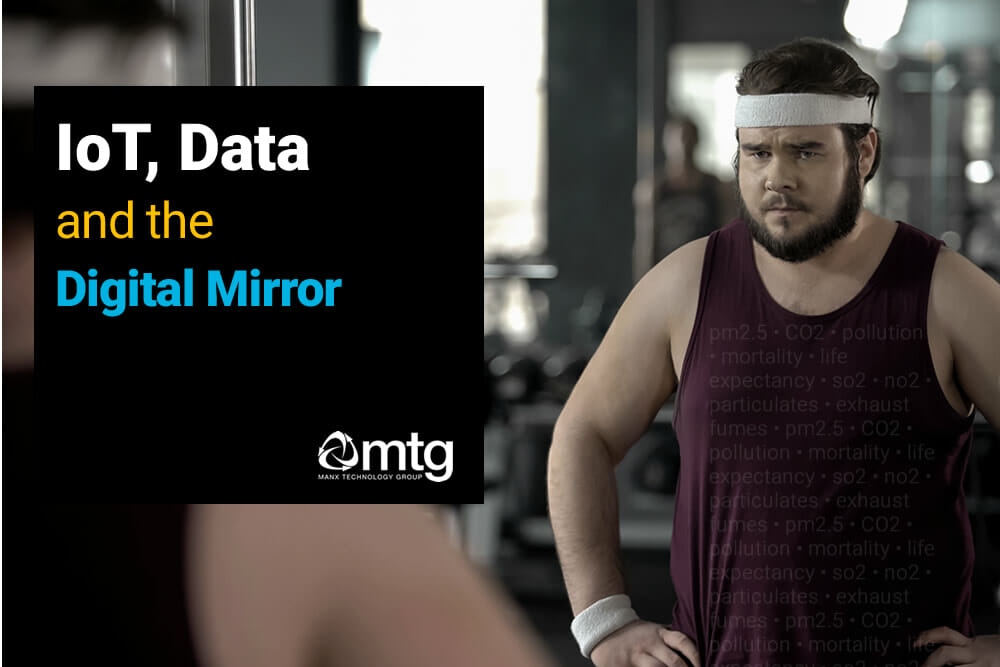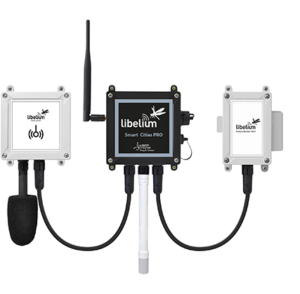
The Digital Mirror concept allows residents and businesses to see their reflection in the form of data. A Digital Mirror reflects the collective impact of peoples’ habits and behaviours, illustrates trends, and provides a stark assessment of the current situation. Internet of Things (IoT) forms the very building blocks of a Digital Mirror; taking millions of measurements relating to air quality, water quality, power consumption, traffic levels and travel patterns.
Abstract concepts such as air pollution, just a buzzword to many, all of a sudden come into focus – with particulate levels displayed with utmost clarity. Reduced life expectancy and increased mortality can also be viewed in the reflection.
It is at this point; most people will begin to see the effect of engines idling, factory emissions, coal fires burning, and the risks of kids walking to school along heavily polluted roads.
Data and the Digital Mirror
Data forms the basis of a Digital Mirror. Governments and local authorities should be pursuing a strategy of hyper-local IoT monitoring to create their own Digital Mirror for the residents and businesses in their local area.
The data will allow residents and business to develop an understanding of the situation; educating and communicating the situation in which they find themselves – rather than continuing to live in ignorance.
We are moving slowly into an era where big data is the starting point, not the end – Pearl Zhu
When people begin to understand the problems, the cause and the resolution – they will start to get onboard. Change becomes less of a burden. People get behind the cause. It then becomes the collective task of governments, councils, residents and businesses to make the mirror image, so much better.
If you can’t measure something, you can’t improve it

While there are overarching guidelines from the likes of DEFRA and SEPA – the prominence of climate issues has led to more residents, groups and businesses pushing for more localised, more frequent, measurements.
In some cases, IoT is being used for hyper-local measurements, where street-level and mobile measurements are now a possibility.
The good news is that many councils have embraced the concept of real-time measurement, IoT technologies and open-data – choosing to publish the results online.
The resultant data then forms part of the environmental strategy, improvement or operating plan. The results often form the foundation of an action plan; describing the current situation and more importantly, how they intend to fix, mitigate or manage the issues.
In the Digital Mirror; Governments, businesses and residents are looking themselves in the eye. The data is a reflection of what they are.
Unfortunately, many organisations shy aware from real-time or hyper-local measurements; choosing to retain the infrequent, fixed, almost traditional modes of analysis. Rather than develop a Digital Mirror, they decide to remain blind or ignorant to the current predicament.
In many cases, the decision not to invest in an IoT or hyper-local monitoring platform is financial, particularly when more pressing items need investment.
Sadly, many choose not to measure the environment, due to a lack of urgency or fear of comeback, discontent or similar disquiet from residents and businesses
Don’t shoot the messenger
Governments, councils and local authorities need to remember the adage Don’t shoot the messenger.
The Digital Mirror and its data – is a reflection of resident, business and government behaviour.
Rather than fearing disquiet or complaints from residents; Governments and local authorities should put effort into explaining the results, the causes and the impact of the collective behaviour.
When people truly understand the situation and its impact – Governments and local authorities will find it far easier to point residents and businesses towards the direction of positive change.
The beauty of a Digital Mirror and Open-Data is that people can see progress.
Low Emission zones will drive down particulates and VOC levels – in an evidential manner.
Walking a more scenic route to school will reduce your child’s exposure to pollutants while increasing their cardiovascular health.
More people walking and getting on their bikes will have a demonstrable impact on emission and particulate levels.
All of a sudden – the mirror image begins to change, in a positive way.
Build your Digital Mirror

IoT (Internet of Things) technology and hyper-local monitoring can serve as the foundation of your Digital Mirror.
Alongside the measurements, Governments and local authorities should provide supporting information, educational material and guidelines that explain to people how they can contribute towards positive change.
For children and students, consider age-appropriate educational content to educate and inform, without unnecessary scaremongering.
Learn more
MTG works with governments and councils to develop hyper-local IoT monitoring solutions, and we can also assist with the development of portals, apps and websites that can be used to educate and inform.
IoT can be used to monitoring both air and water quality.
To learn more about hyper-local IoT monitoring, the Digital Mirror concept and air quality monitoring – speak to our sales team. E-mail sales@mtg.im, Call +44 1624 777837 or submit the contact form on our website.

